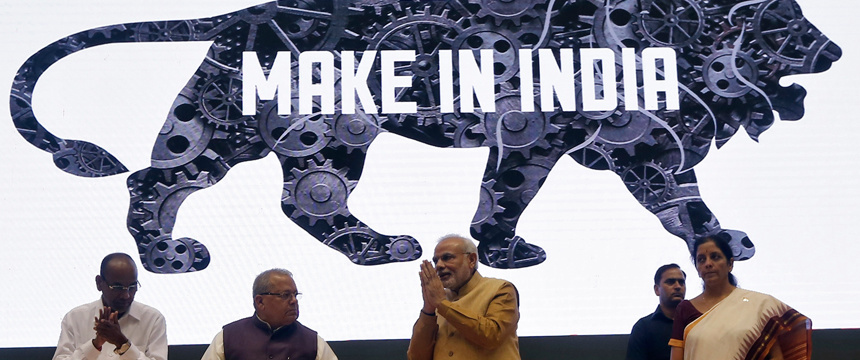Have you wondered why Japanese workers do not feel insecure about excessive automation? The answer lies in their dynamics of demography and policy infrastructure but for a nation like ours that is quite drastically opposed to Japan in both the aspects, can the same strategy be successfully employed?
Kavya Thomas | The New Leam
The excessive use of robotics in spheres where earlier humans were the key actors especially in countries with a population explosion should surely be a concern before it is too late. This would mean that as robots begin to do all the work that humans did, many people across sectors would lose their source of employment and therefore be unable to sustain themselves and their families.

The question that we must all contemplate upon is whether in the name of technocracy, modernity, development or science is it ethical to allow such kind of advances to intervene in such an unprecedented manner keeping in mind the civilizational repercussions that it may hold?
In countries where the working population is low or inadequate the use of robots will possibly not cause as much of a problem as in countries where people are already in a shortage of sources of employment.
It is in this context that the case of Japan as a country becomes quite interesting to observe. While Japanese robotics and technological advancement has grown in a massive way, the working population of the country does not seem to be worried about losing their jobs to robots that are not only efficient but also faster, accurate and lack the possibility of making mistakes.
In fact Japanese workers treasure automation and take immense pride in their country’s achievements in the field. They do not fear losing their jobs to the robots perhaps because of the unique ‘lifetime employment system’ that is in place in Japan.
If one were to travel across the world it would be difficult to find a culture which cherishes its robots more than Japan. This fact is further made clear by the fact that companies such as SoftBank and Toyota Motor Corp. are producing robots not only for high-end industry use but also for regular consumers to be used as their constant ‘companions.’

One must understand that in Japan the birth rates are on the constant decline and this has evidently meant the decline of the working population and thus labor shortage. In order to deal with the alarming statistics there was a push towards robotics since the 1990s.
Japan has the record of leading the world in robots.
It has been estimated that in Japan per 10,000 workers in the automobile sector — 1,562 are robots compared with 1,091 in the U.S. and 1,133 in Germany, according to an important White House report. Japan was also ahead in sectors outside automobiles at 219 robots per 10,000 workers, compared with 76 for the U.S. and 147 for Germany.
Despite the evident excess in the use of robotics the working population of Japan is not worried about losing their jobs to these robots. The reason for this is that most companies in Japan retain their workers, even when their capabilities are outdated for almost a lifetime- utilizing them in various tasks for the company.
It is this unique system that has been put in place that has enabled the workers to not get insecure despite the onset of unprecedented robotics in almost all spheres of work and employment.
Despite the fact that data from the Organization for Economic Cooperation and Development (OECD) shows that digitalization very significantly leads to the reduction in the demand for mid-level routine tasks such as running assembly lines, that trend has been lesser in degree in Japan than in the U.S. The OECD data, which intricately studied shifts from 2002 to 2014, showed employment trends remained almost unchanged for Japan.
This in turn meant that companies in Japan were less aggressive in terms of robotics as those in the U.S. were to have robots replace humans at many employable functions.
It is true that automation has progressed in Japan to the extent that now the nation has entered the “reflective stage,” in which “human harmony with machines” is being pursued.
It is in the context of this discussion that if we look at what Mr. Kiyosi Sakai who works with a top brewing company in Japan has to say as he recalls his long stint in the company. Mr. Sakai says that in the past, can caps had to be placed into machines by human hand, this was a task that was monotonous and repetitive and moreover it was hard not just on the body, but also the mind. And so he says that he is grateful for automation’s helping hand. Machines at the plant have become more than 50% smaller over the years. They are faster and far more precise than they were three decades ago.
Similar to many workers in Japan, Mr. Sakai doesn’t seem to be extremely worried about his job disappearing in fact he recalls how he got promoted to a higher position in the company very recently asserting that he did not fear technology as his was in a stable job.
Japan’s advancement towards technology has meant that the monotonous and labour intensive works that humans had to toil through in factories and industries is now gradually being taken over my machines but contrary to nations such as ours this has not implied that the common workers who gained their living by their job in the factory would lose it because of automation technology.
We must ask ourselves that do we have a system like Japan’s ‘Lifetime Employment’ scheme to ensure that people’s livelihoods are not endangered before making digitalization a national campaign? While we as a nation rush aggressively on the robotic-automation path are we structurally prepared to deal with its consequence?
Are we aware that our demographic situation is contradictory to that of Japan and therefore the same road to progress cannot work for us?
Are we aware that robotic intervention in countries with lower population density is a boon while in countries with a population excess it will have devastating consequences?
This is not the forum to give definitive answers or to suggest a certain viewpoint rather it is time that we understood the nuances of the matter and asked ourselves where we have lost our own sense of individuality? Perhaps only then can we be able to take a break from our obsession with automation and technocracy and chart out our own distinctive, culturally sensitive plan towards development and progress. Are we ready to stop this mechanical imitation?
The New Leam has no external source of funding. For retaining its uniqueness, its high quality, its distinctive philosophy we wish to reduce the degree of dependence on corporate funding. We believe that if individuals like you come forward and SUPPORT THIS ENDEAVOR can make the magazine self-reliant in a very innovative way.








